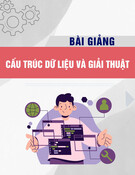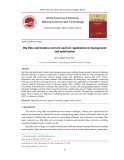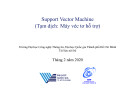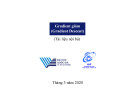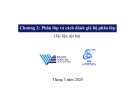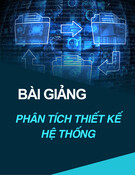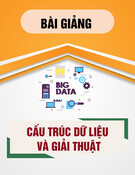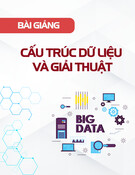
TNU Journal of Science and Technology
229(15): 112 - 120
http://jst.tnu.edu.vn 112 Email: jst@tnu.edu.vn
A DEEP LEARNING-BASED METHOD FOR BLUR IMAGE CLASSIFICATION
USING DENSENET-121 ARCHITECTURE
Nguyen Quang Thi*, Nguyen Huu Hung, Ha Thi Hien, Le Van Nhu
Le Quy Don Technical University
ARTICLE INFO
ABSTRACT
Received:
15/11/2024
Blur image classification is essential for computer vision applications,
including image quality assessment, surveillance and medical imaging
systems. This study proposes a method to classify different types of blur:
sharp, Gaussian blur, motion blur, and defocus blur, using the DenseNet-
121 architecture. The approach leverages densely connected
convolutional layers of DenseNet-121 for efficient, multi-scale feature
extraction critical for distinguishing blur types. Data augmentation was
applied to create diverse blur patterns, and the model was fine-tuned on a
specialized dataset for robust performance. Transition layers and a global
average pooling layer with a softmax classifier were incorporated to
optimize feature management and output class probabilities. Experiments
demonstrated that this method achieves a high accuracy rate of 97.8%,
outperforming baseline models in blur classification. Overall, the
DenseNet-121-based approach significantly enhanced classification
accuracy and provides a scalable, effective solution for real-world image
processing tasks that required precise blur detection.
Revised:
18/12/2024
Published:
18/12/2024
KEYWORDS
Blur image classification
DenseNet-121 architecture
Image quality assessment
Data augmentation
Computer vision
PHƯƠNG PHÁP DỰA TRÊN HỌC SÂU TRONG PHÂN LOẠI HÌNH ẢNH MỜ
SỬ DỤNG KIẾN TRÚC DENSENET-121
Nguyễn Quang Thi*, Nguyễn Hữu Hùng, Hà Thị Hiền, Lê Văn Nhu
Trường Đại học Kỹ thuật Lê Quý Đôn
THÔNG TIN BÀI BÁO
TÓM TẮT
Ngày nhận bài:
15/11/2024
Phân loại ảnh mờ đóng vai trò quan trọng trong các ứng dụng thị giác
máy tính, bao gồm các hệ thống đánh giá chất lượng hình ảnh, giám sát
và hình ảnh y tế. Nghiên cứu này đề xuất một phương pháp để phân loại
các loại mờ khác nhau: ảnh sắc nét, mờ Gaussian, mờ chuyển động và mờ
do mất nét, bằng cách sử dụng kiến trúc DenseNet-121. Phương pháp này
khai thác các lớp tích chập kết nối dày đặc của DenseNet-121 để trích
xuất đặc trưng nhiều mức một cách hiệu quả, điều này rất quan trọng cho
việc phân biệt các loại mờ. Kỹ thuật tăng cường dữ liệu cũng được áp
dụng để tạo ra các mẫu mờ đa dạng, và mô hình được tinh chỉnh trên một
tập dữ liệu chuyên biệt để đảm bảo đạt hiệu suất cao. Các lớp chuyển tiếp
và lớp global average pooling với bộ phân lớp softmax được tích hợp để
tối ưu hóa quản lý đặc trưng và đưa ra xác suất phân lớp. Thực nghiệm
cho thấy phương pháp này đạt độ chính xác cao (97,8%), tốt hơn so với
các mô hình cơ bản khác trong phân loại ảnh mờ. Nhìn chung, phương
pháp dựa trên DenseNet-121 này cải thiện đáng kể độ chính xác phân loại
và cung cấp một giải pháp hiệu quả, có khả năng mở rộng cho các tác vụ
xử lý ảnh yêu cầu nhận diện mờ chính xác.
Ngày hoàn thiện:
18/12/2024
Ngày đăng:
18/12/2024
TỪ KHÓA
Phân loại ảnh mờ
Kiến trúc DenseNet-121
Đánh giá chất lượng hình ảnh
Tăng cường dữ liệu
Thị giác máy tính
DOI: https://doi.org/10.34238/tnu-jst.11560
* Corresponding author. Email: thinq.isi@lqdtu.edu.vn









